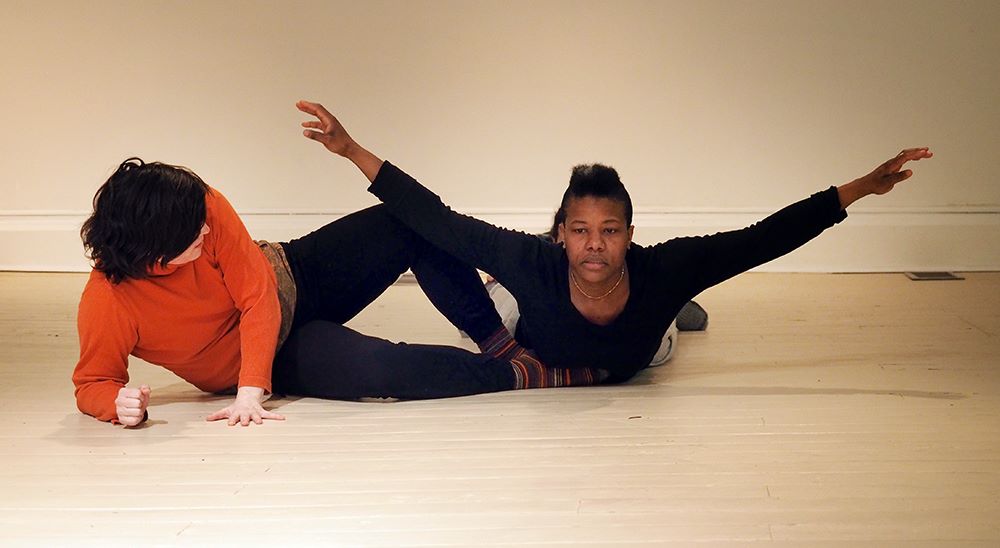PHYSICAL INTERVIEW EXERCISES
These exercises were developed as a way to explore the relationship between the values of Oral History practice and the values of dance improvisation.
1) An exploration in pairs: An Interviewer and a Narrator
- Allow the discoveries we made during the oral history sessions about silence, open questions, closed questions and affirmations to guide a physical partnership.
- Maintain physical contact in order to place the focus on physical listening. *the tendency could be to back off and give space…to allow watching to stand in for listening. But I wanted both bodies to remain engaged and encourage the dancers to find an active form of listening.
- Practice supporting or “being with” another person in the ways an interviewer supports a narrator in an oral history interview session. (i.e. Non-verbally prepare the body and mind of the narrator in the way an interviewer would turn off fans, explain that the microphone was sensitive, find a good area in the room to sit etc. Find a physical version of a sound test / audio ID section: tender and efficient physical attention to the other person. Physical assurance about the type of touch that will be coming next. Ask clear “open questions” with the touch. Continue listening)
- Allow each pair to explore the metaphor in their own way, accessing their individual synthesis of the material from the oral history sessions.
- Pause to discuss: articulate discoveries and questions as a group.
- Trade roles to continue investigating.

Some things that came up:
- how does silence translate? It doesn’t have to be stillness. There is kinetic silence.
- What is the difference between open questions and listening in this physical structure. Can listening include “joining” in this context? We decided yes.
- The narrator is not remembering a past event or telling a “story”, they are instead navigating the present. (The difference between the present tense nature of these physical interviews and the past tense investigation in a verbal interview is important to note. And to honor)
2) Exploration in trios: An interviewer, a narrator and a witness.
This begins with a physical interview for a duo as explained above, while one person (the witness) watches from afar. After a period of time the witness joins the duo in proximity to softly ask an open question with their voice. As the trio builds physically they maintain their roles, allowing a collaboration across voice and body.
From here there are several options to work with layered structures for 5 or 6 bodies and a few overlapping interviews.
This physical interview practice became a warmup exercise that we returned to throughout the process; a way for us to continually manifest the oral history work through physical investigation. It also became embedded in several performed scores, most notably, The Interview Structure and a springboard for creating movement material i.e. “homage duets”.
